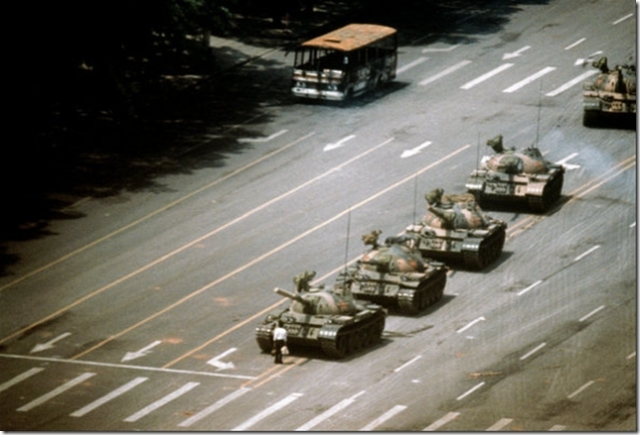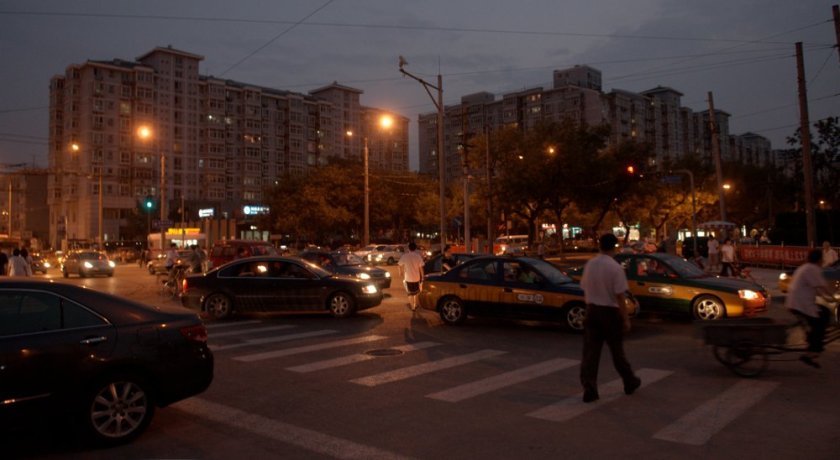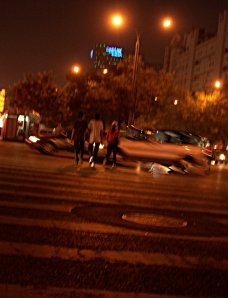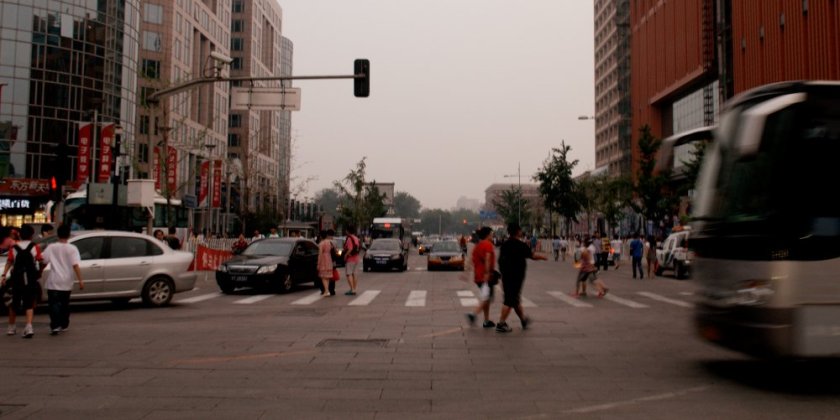Beijing has some lovely wide avenues. It’s not like London, where the streets are only wide enough for cars, and are too narrow for bicycles. The boulevards that cross the grid-patterned city at half-km intervals are not only wide enough for three or four lanes of traffic each way and a generous pavement for the pedestrians, they can also comfortably accommodate spacious segregated cycle paths between the two. Indeed, the pavements and cycle paths are so wastefully over-endowed that each can just about fit three motor-vehicles across their width: one park ed on each side, and one carefully crawling between them looking for a space. The Chinese have brilliantly invented a road design that gets eight parking places per car’s length of road, and the Motorist doesn’t even have to get in anybody’s way: all eight lanes of through traffic can remain clear and free flowing. The best that London can manage is four parallel parking places — and the pavements are never wide enough to accommodate more than one of those each. Once again, China demonstrate why they are the future and we are the past.
ed on each side, and one carefully crawling between them looking for a space. The Chinese have brilliantly invented a road design that gets eight parking places per car’s length of road, and the Motorist doesn’t even have to get in anybody’s way: all eight lanes of through traffic can remain clear and free flowing. The best that London can manage is four parallel parking places — and the pavements are never wide enough to accommodate more than one of those each. Once again, China demonstrate why they are the future and we are the past.
Beijing has five million cars already. Just over twice as many as London, for a population three times the size. The number of cars on the streets grows by 10% per year. With each new morning, there are 1,500 more cars idling in the jams on the five ring-roads; 1,500 more freshly graduated drivers, free to roam, safe with the knowledge of what to do with the exposed intestines of the pedestrians and cyclists they drive over. Every new day 1,500 more cars than yesterday need to be parked somewhere convenient in the central business districts of Beijing.
They compete for 940,000 official parking spaces.
Every week another ugly multi-storey car park opens; each new office block and shopping mall comes with several floors of underground parking. But the city clearly isn’t keeping up. The poor Motorist has to park somewhere. The city has even considered waging war on the poor Motorist by raising the municipal car parking charge from the current 25 pence per half-hour. But worst of all, in some places — such as here at the Yonghegong Lama Temple, they have now installed hard physical barriers separating pavement from road:

The problem with walking around Beijing, though, is that for some reason people kept thinking that their bicycles (and tricycles) belonged on the pavement. Even worse, on sections where the pavements are narrower and are therefore only wide enough to accommodate a single car parked perpendicular to the road, pedestrians must of course walk on the cycle path, being careful not to scratch the paintwork of any car that is driving down it in search of that elusive available space. And yet, rather than recognising that the cycle path simply isn’t wide enough for bicycles, cyclists continue to try to push their way down them, ringing their bells intimidatingly at pedestrians and Motorists. These are the sorts of selfish and anti-social behaviours that the city’s authorities need to crack down on if they are to complete their transition to a pleasant, modern, developed city.

–Joe







